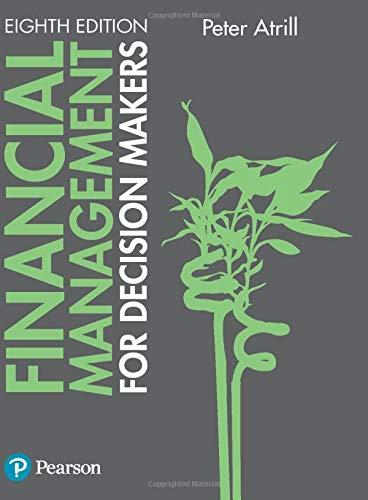

The first drop options are 1.82, 1.49, 1.35, 1.28 The Second Drop Options are 11.3%, 6.2%, 6.7%, 10.3% Review this situation: Transworld Consortium Corp. is trying to identify its optimal capital structure. Transworld Consortium Corp. has gathered the following financial information to help with the analysis Debt Ratio Equity Ratio EPS DPS Stock Price 30% 70% 1.25 0.55 36.25 40% 60% 1.40 0.60 37.75 50% 50% 1.60 0.65 39.50 60% 40% 1.85 0.75 38.75 70% 30% 1.75 0.70 38.25 Which capital structure shown in the preceding table is Transworld Consortium Corp.'s optimal capital structure? O O Debt ratio = 50%; equity ratio = 50% Debt ratio = 40%, equity ratio = 60% Debt ratio = 30%, equity ratio = 70% Debt ratio = 60%, equity ratio = 40% Debt ratio = 70%, equity ratio = 30% Consider this case: Globo-Chem Co. is an all-equity firm, and it has a beta of 1. It is considering changing its capital structure to 65% equity and 35% debt. The firm's cost of debt will be 8%, and it will face a tax rate of 35%. What will Globo-Chem Co.'s beta be if it decides to make this change in its capital structure? Now consider the case of another company: U.S. Robotics Inc. has a current capital structure of 30% debt and 70% equity. Its current before-tax cost of debt is 8%, and its tax rate is 35%. It currently has a levered beta of 1.25. The risk-free rate is 2.5%, and the risk premium on the market is 7%. U.S. Robotics Inc. has a current capital structure of 30% debt and 70% equity. Its current before-tax cost of debt is 8%, and its tax rate is 35%. It currently has a levered beta of 1.25. The risk-free rate is 2.5%, and the risk premium on the market is 7%. U.S. Robotics Inc. is considering changing its capital structure to 60% debt and 40% equity. Increasing the firm's level of debt will cause its before-tax cost of debt to increase to 10%. Use the Hamada equation to unlever and relever the beta for the new level of debt. What will the firm's weighted average cost of capital (WACC) be if it makes this change in its capital structure? Which of the following statements regarding a firm's optimal capital structure are true? Check all that apply. The optimal capital structure maximizes the firm's EPS. The optimal capital structure minimizes the firm's cost of debt. The optimal capital structure maximizes the firm's stock price. The optimal capital structure minimizes the firm's cost of equity. The optimal capital structure minimizes the firm's WACC. Review this situation: Transworld Consortium Corp. is trying to identify its optimal capital structure. Transworld Consortium Corp. has gathered the following financial information to help with the analysis Debt Ratio Equity Ratio EPS DPS Stock Price 30% 70% 1.25 0.55 36.25 40% 60% 1.40 0.60 37.75 50% 50% 1.60 0.65 39.50 60% 40% 1.85 0.75 38.75 70% 30% 1.75 0.70 38.25 Which capital structure shown in the preceding table is Transworld Consortium Corp.'s optimal capital structure? O O Debt ratio = 50%; equity ratio = 50% Debt ratio = 40%, equity ratio = 60% Debt ratio = 30%, equity ratio = 70% Debt ratio = 60%, equity ratio = 40% Debt ratio = 70%, equity ratio = 30% Consider this case: Globo-Chem Co. is an all-equity firm, and it has a beta of 1. It is considering changing its capital structure to 65% equity and 35% debt. The firm's cost of debt will be 8%, and it will face a tax rate of 35%. What will Globo-Chem Co.'s beta be if it decides to make this change in its capital structure? Now consider the case of another company: U.S. Robotics Inc. has a current capital structure of 30% debt and 70% equity. Its current before-tax cost of debt is 8%, and its tax rate is 35%. It currently has a levered beta of 1.25. The risk-free rate is 2.5%, and the risk premium on the market is 7%. U.S. Robotics Inc. has a current capital structure of 30% debt and 70% equity. Its current before-tax cost of debt is 8%, and its tax rate is 35%. It currently has a levered beta of 1.25. The risk-free rate is 2.5%, and the risk premium on the market is 7%. U.S. Robotics Inc. is considering changing its capital structure to 60% debt and 40% equity. Increasing the firm's level of debt will cause its before-tax cost of debt to increase to 10%. Use the Hamada equation to unlever and relever the beta for the new level of debt. What will the firm's weighted average cost of capital (WACC) be if it makes this change in its capital structure? Which of the following statements regarding a firm's optimal capital structure are true? Check all that apply. The optimal capital structure maximizes the firm's EPS. The optimal capital structure minimizes the firm's cost of debt. The optimal capital structure maximizes the firm's stock price. The optimal capital structure minimizes the firm's cost of equity. The optimal capital structure minimizes the firm's WACC








